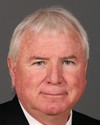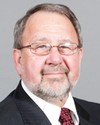Who lives, who dies, and if you said you went left but you actually went right...all these sorts of things. You don't get to lie to the weapon effects simulation system.
Wainwright is just a culminating point for the journey of training. These simulators will be found in our garrisons, so people can use them before they get there, and in our schoolhouses so they can use them there before they get there as well. They're complemented by the computer systems where you train without necessarily going to the field--computer-assisted training.
So within the land force, we're modernizing at a rapid rate. Within the Canadian Forces, we're working to integrate land, sea, and air so that you can actually fight in Wainwright with real troops, and you're connected to a brigade headquarters that has a virtual multinational partner and you can connect to maritime forces off British Columbia and make them look like they're actually providing you support from the sea, without actually having to be there.




